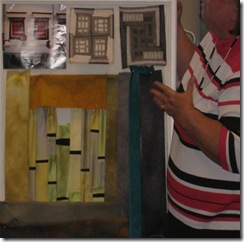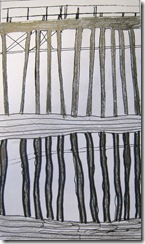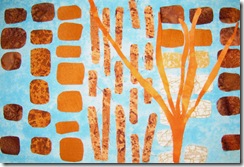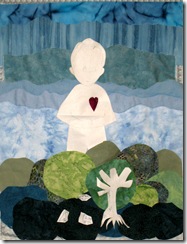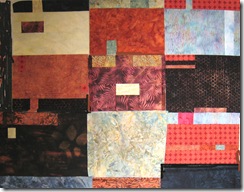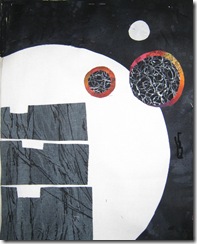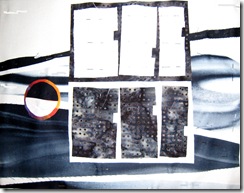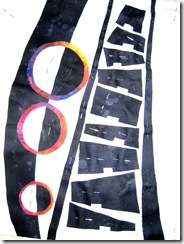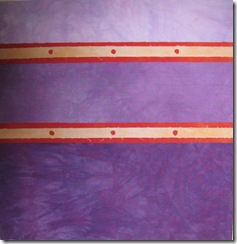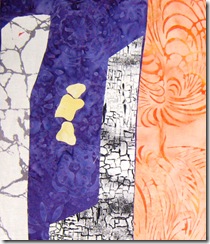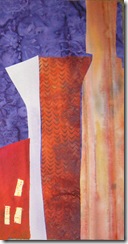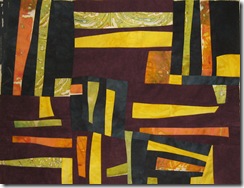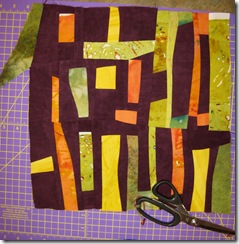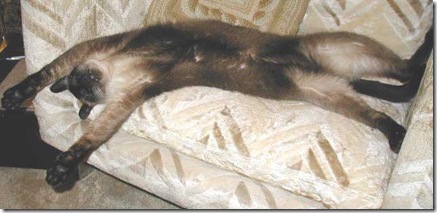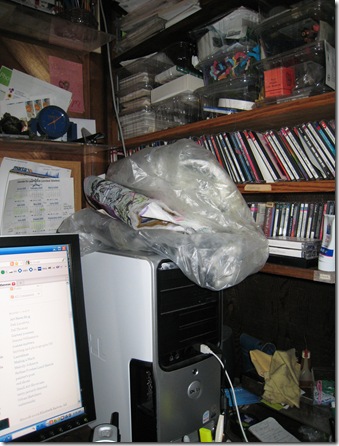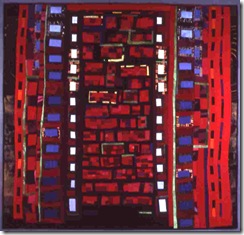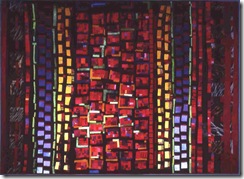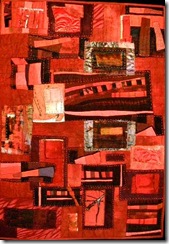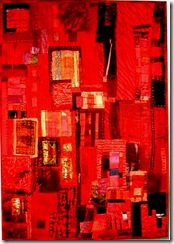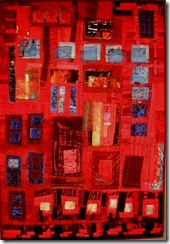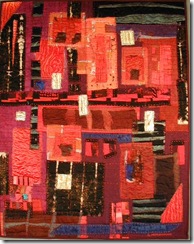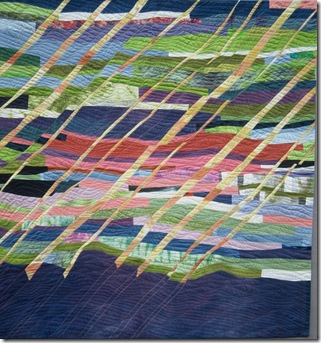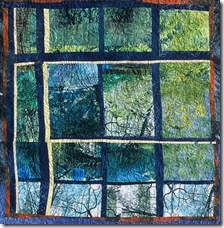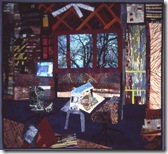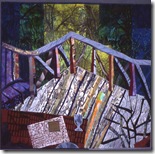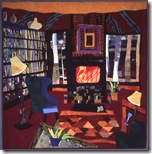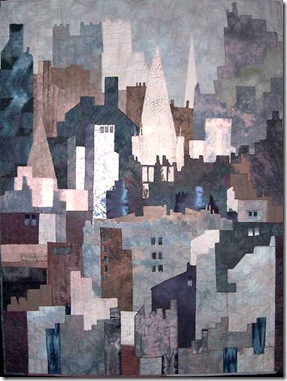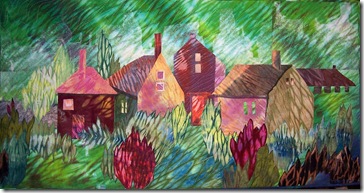Yesterday I reported on the workshop I just led in Phoenix, AZ on working in a series. Over three days the people in the class designed a series of 5 or 6 quilts and set to work making them! here are some more images:
Judy’s “story board” shows both the original photograph and two of the many sketches she drew – and she did value sketches! These are so invaluable. Her series will all be based on one photograph of Tibetan windows with lots of different manipulations of the graphic pattern that they made. The colours were gorgeous and subtle and I think there could be a series of 20 pieces!
Frances devised a series based on a simple graphic of a chair back in the room…but the images developed a life of their own with a very oriental feel..this is the first of 6 sketches translated into very appropriate beautifully chosen fabric. Frances used a narrow applique stitch in a contrasting colour which really enhanced the image when seen in close up.
Here are Betty and a friend holding up a wonderful landscape piece made from my shibori fabric! I’ve never seen it looking so good. Betty worked from a painting she’d done of a photograph…by manipulating the values she came up with several different beautiful Arizona mountainscapes…She also plans to continue the series by varying not only value relationships but also the colour palette.
Several people focused on developing a series of sketches: Joan took a mesa theme – first drawing out a simple abstract view of a mesa based on a photograph, then manipulating and layering the images, adding depth and shadows. subtle and intriguing! Miriam also spent much time planning how to organize intricate surface designed fabric mixed with various strong political images into coherent harmonized compositions. I think this is a very useful way to benefit from a workshop – lots of planning while the teacher is there to assist and discuss. Sharon also spent her time drawing. She planned a chronological series exploring the houses in which she’d lived in her life. Lots of content in her very nicely drawn images – in fact so much detail that we felt that many of them could be divided into 2 or even 3 quilts. Don’t think you need to work from the whole drawing!!
Barbara also worked in her sketch book planning surface design variations on her theme of grasses – we discussed the importance of having both meaning and tension in a piece to make it stand out from the crowd. This is especially true if you’re working with a theme that has been done before. It’s a lot harder to make a new fresh statement about a landscape than it is about shirts folded in a cupboard (I allude to some fine drawings I saw in the Whitney biennial a few years ago).
I don’t know why I don’t have any pictures of Nancy’s work, unfortunately – probably because she was a dynamo and the pieces were not still long enough to be photographed!! She developed a series based on a simple patch…the dots of the stitching (when blown up in the sketch) were amazingly fresh and evocative. Nancy had at least 4 pieces almost finished at the end of 3 days!
Brenda completed a gorgeous series of very sensitive drawings all based on one photograph – the possibilities from these drawings are endless and I could definitely see many more than 6 quilts! Hand drawings have such a beautiful quality of line that is not difficult to translate into fiber whether you work by applique or piecing – I am so looking forward to seeing these quilts!
Sue made a number of refined and delicate studies based on changes and arrangements of just two elements. There’s so much you can do with just a shape and a line if you allow yourself to play and create – which Sue did!
Overall it was a great workshop with a surprising variety of ways of creating a series being demonstrated. You can work from simple or complex initial inspirations to come up with so many different possibilities! I don’t know why everyone doesn’t do this!! It’s SO much more satisfying than trying one of this and one of that don’t you think?
Well, now it’s time for a cup of tea and then back into working on my own series…so, if you have been, thanks for reading! Elizabeth
